Sacred Sites of Kazakhstan
In this part of the website, we present information passports of Kazakhstan’s sacred sites, which contain detailed information regarding the history of the sacralization of the site, specific practices of worshiping the site, its physical condition and the infrastructure around it, etc. These descriptions accompany additional materials which are relevant to the site: photographs, satellite maps, information materials, books, articles, as well as artifacts and manuscripts.
Volunteers can take part in the preparation of site passports which are not yet presented on this page of the website. To do this, please go to the “Participate” section, where you will find the passport form.
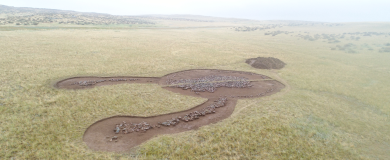
Kokentau, archaeological site
Name: Archaeological complex of Kokentau.
Site type: A group of archaeological sites from the Stone Age to ethnographic modernity.
Location: The monument is located within the Semey urban district (90 km from the city of
Semey) of East Kazakhstan.
Founding time: 1860s
Date of the site: 2nd millennium BC. - VIII century
The nearest settlement: The archaeological complex is located 30 km south from the
Kokentau village of Semey EKR.
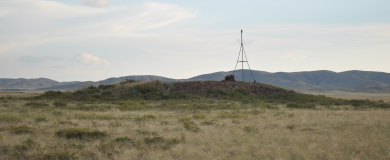
Semeytau, archaeological site
Name: Archaeological sites of Semeytau.
Site type: a group of archaeological sites from the era of ancient nomads.
Location: The monument is located within the Semey urban district (40 km from the city of
Semey) of the East Kazakhstan region.
Dating of the site: VI century. BC e. - XIII century.
The nearest settlement: The site is located 10 kilometers east from the village of
Kokentau and 40 kilometers from the town of Semey VKO.
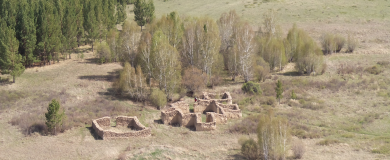
Kyzyl-Kent
Name: Kyzyl-Kenish, Kyzyl-Kent, Kyzyl-Kent Palace, Kyzyl-Kent Palace, Kyzyl-Kench
Palace, Kyzyl-Kench Palace, Kaz. Kyz-Aulie, oir. Xaslux.
Site type: Ruins of a Buddhist monastery.
Founder: Khundulen-ubashi, Oirat aristocrat or Ochirtu Setsen-khan, khan of khoshuts.
Founding time: 1650s or 1672-73
Period of use: 1650s – end of XVII century.
Main functions: Temple, Buddhist stationary monastery, residence.
Religious affiliation: Buddhism of the Tibetan gelukpa tradition.
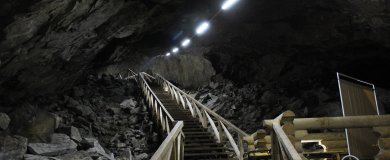
Konyr-aulie, cave
Name: Konyr-aulie. There are also options as Konnur-aulie, Konur-aulie. Kaz.
Site type: Natural karst cave with underground freshwater.
Period of use: XVIII-XXI centuries.
Main functions: Shelter, place of religious worship.
Religious affiliation: Pre-Islamic cults, Islam.
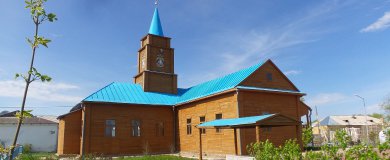
Kunanbai Mosque
Name: Kunanbai Mosque in Karkaraly (Kaz. Qunanbay meshiti)
Site type: Muslim Mosque
Founder: Kunanbai Oskenbayuly (Kazakh Құнанбай Өскенбайұлы 1804-1886).
Founding time: 1847-1853
Period of use: from 1853 to 1928, from 1991 to the present.
Main functions: historical and cultural site and one of the Muslim mosques in Karkaraly.
Religious affiliation: Islam of the Hanafi madhhab.
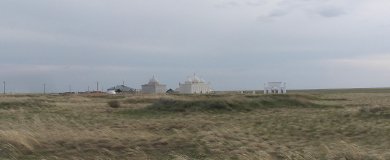
Isabek-ishan mausoleum in Akkol Zhailma
Name: Mausoleum (mazar complex) of Isabek-Ishan in Akkol Zhailma (Kaz. Исабек-
ишанын мазары)
Site type: Burial and ancestral complex of the sacred kozha family, where Isabek-Ishan, his
descendants and relatives are buried.
Founder: Isabek-Ishan (around 1792-1871).
Founding time: 1871
Period of use: since 1871.
Main functions: burial place of the saint.
Religious affiliation: Islam of the Hanafi madhhab
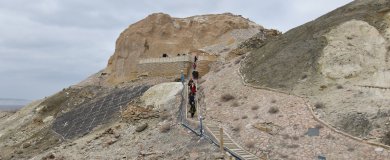
Beket-ata Mausoleum in Oglandy
Name: Mausoleum (mazar complex) of Beket-ata in Oglandy (Kaz. Бекет-ата Огландыда)
Site type: Former mosque founded by Beket-ata, which became the mazar of its founder.
Founder: Beket Myrzagyluly (1750-1813).
Founding time: Beginning of the XIX century.
Period of use: Since 1813 it functions as a place of pilgrimage
Main functions: Central object of the pilgrimage rite
Religious affiliation: Islam of the Hanafi madhhab.
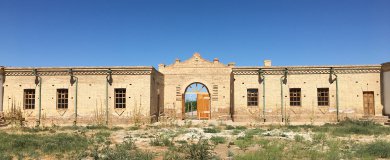
Mosque and madrasah of Kalzhan-akhun
Name: Kalzhan-akhun mosque and madrasah (kaz. Калжан-ахун мешiт медресе)
Site type: Complex of mosque, madrasah and mazar
Founder: Kalzhan Bolekbayuly (Kalmukhamed) -akhun (1862-1916)
Established: 1916
Period of use: 1916-1944
Main functions: Place for holding Muslim ceremonies
Religious affiliation: Islam of the Hanafi madhhab
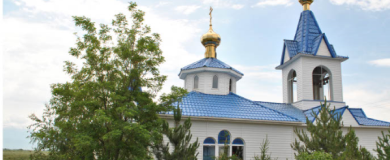
Orthodox Church
Name: Church in honor of the Icon of the Mother of God "Life-giving spring"
Site type: Church, chapel with baptismal font, open-air font
Founder: Bishop of Turkestan and Tashkent Dimitri (Abashidze); Metropolitan of Astana
and Alma-Ata Methodius (Nemtsov), Hieromonk Gleb (Zhartovsky)
Founding time: 1860s
Period of use: 1860s - present.
Main functions: ritual dipping, baptism and liturgical services
Religious affiliation: Orthodox Church
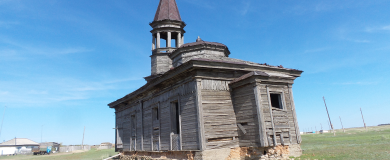
Akkol mosque
Name: Akkol mosque (Tat. Akkolsk machete), historical name Akkoltyk machete.
Site type: The building of an ancient mosque, dilapidated, without windows, doors, with an almost destroyed roof and a heavily tilted minaret.
Founder: Construction Sponsor is Muhammad Wali Khamitov. The founders are Mutallap Fazylbekov (1874-1937) and Sultangali Fazylbekov, (1847-1912).
Foundation time: 1907
Period of use: 1907-1920s
Main functions: Functions of a mosque; today the building does not function as a mosque.
Religious affiliation: Islam, Hanafi persuasion.
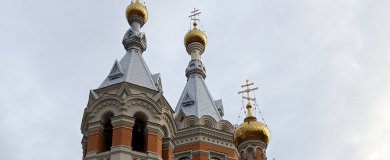
Cathedral of Christ the Savior, Uralsk
Name: Cathedral of Christ the Savior, Uralsk, Unified Church of Christ the Savior, Uralsk,
Temple of Christ the Savior, Uralsk
Site type: Orthodox Cathedral
Founder: General Nikolai Nikolaevich Shipov (1846-1911), Chieftain of the Ural Cossack
Army (1885-1893).
Founding time: 1907.
Period of use: 1907-1929, 1990-present.
Main functions: Provides liturgical services for the entire Orthodox population of the
Uralsk city
Religious affiliation: Eastern Orthodox Christianity.
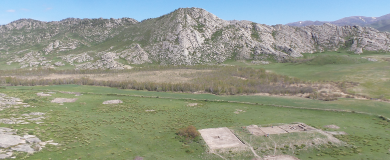
Ablai Kit
Name: Ablai-kit (oir. Ablaiin keyed, Ablaiin süm-e).
Site type: Remains of a fortified Buddhist monastery.
Founder: Ablai-taiji, Oirat aristocrat.
Foundation time: 1652
Period of use: 1652 – early XVIII century.
Main functions: Temple, Buddhist stationary monastery, workshop, school.
Religious affiliation: Buddhism of the Tibetan Gelukpa tradition.

